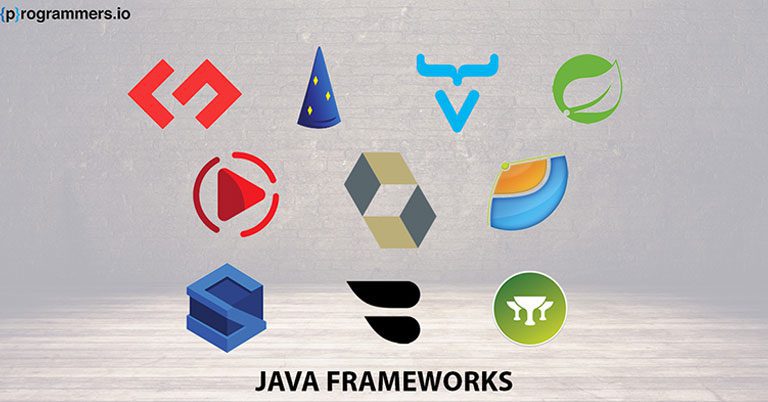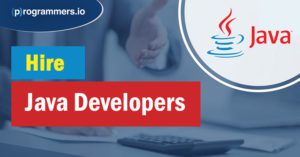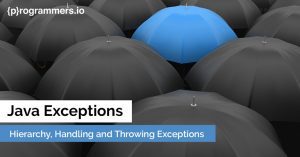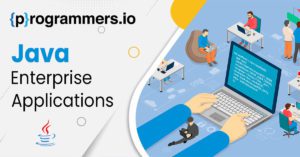There are several reasons why java, one of the earliest programming languages, is still extensively used. Firstly, java’s immense power is making it a permanent feature of modern programming. Combining this with the benefits of robust Java frameworks can cut the time it takes to complete large projects in half.
Here, you will learn about the most popular Java frameworks in 2022. While there are more than just 10 Java frameworks, the ones identified and reviewed below stand out in functionality and accessibility.
What Are Java Frameworks?
Java frameworks are required to create any Java-based applications. Java is a high-level programming language that aids in developing superior software.
Java developers can contribute their code to the platform’s pre-written code to meet the framework’s particular criteria. It saves time and money by eliminating manuals and rewriting codes from scratch.
Java frameworks may include prespecified classes, activities, and procedures for giving inputs, running processes, and interfacing with diverse software.
It helps us focus on the software’s essential logic rather than implementing basic functions like database connectivity and exception handling. There are numerous Java frameworks available, each with its advantages and disadvantages. The 10 most popular Java frameworks are discussed below.
1. Spring
Spring is a relatively lightweight version of the Java framework that you may use in almost any Java project. It’s a versatile framework that you can apply to any project stage or layer. It stands out since you can work on the entire scope rather than just a single project layer.
You will like the Spring framework if you enjoy working with the MVC model. The framework also offers robust security protocols that you can call functions already created. Processes like validation, verification, and authentication become much easier to incorporate (correctly) into any project due to this. Spring is used by companies such as eBay and Netflix.
2. Apache Struts
The Apache Software Foundation maintains this Enterprise Java framework. It helps create MVC-based web applications, and Struts 1 and Struts 2 are its two variations.
The Struts 2 iteration combines OpenSymphony’s webwork architecture with Struts 1. It outperforms Struts 1 and is therefore preferable. Struts include several advanced functionalities that you can use in web applications.
3. Hibernate
Hibernate is an object-relational mapping (ORM) solution that eliminates common data processing mismatch problems. The Hibernate ORM model could quickly become your favorite if you deal with relational databases frequently.
The framework includes data-handling capabilities that help to close paradigm gaps. Dell and IBM have utilized the Hibernate model for their web applications.
4. Grails
It is a flexible full-stack Java framework based on the MVC design trend. It’s simple to understand and one of the best Java frameworks for novices. It’s also an object-oriented language, which can help developers work more efficiently. Grails is a Groovy-based application that runs on the Java platform. It’s also fully compatible with Java syntax.
5. Java Server Faces
Oracle’s architecture is a component-based user interface framework. It has valuable features and modules for creating web app dashboards and user interfaces. It is one of the best organized Java frameworks out there. The ability to seamlessly integrate back-end code with user interfaces is a significant characteristic of Java servers. It is a necessary component of Java EE.
6. Vaadin
This framework provides developers with an easy-to-use infrastructure for web development, allowing them to create stunning web applications. In this Java framework, the DOM is immediately available to the JVM.
Vaadin was split into two parts after the latest release: a lightweight java architecture called Vaadin Flow for navigation and client-server interactions. The interaction between the browser and the server was automated as a result.
7. Google Web Toolkit (GWT)
GWT is open source, as one would expect from a Google product. The fact that it’s simple to create stunning UIs with no experience of front-end scripting languages is why many programmers start with GWT. It essentially converts Java code into packages that can be seen in a browser.
The GWT framework creates web apps like Google AdSense, Google Analytics, and Blogger. It’s packed with features and backed by a big team of dedicated engineers, making it ideal for developing scale-sensitive applications.
8. Dropwizard
Because of the large number of libraries available, this lightweight framework allows developers to finish their applications quickly. You can use the framework to develop stable and reliable RESTful APIs. It aids in the development of Java microservices. It’s a free, open-source framework that’s simple to set up and boosts productivity.
9. Blade
The Blade framework is a fork of the bigger Let’s Blade project that is exceptionally lightweight. The Blade framework will have you developing apps in no time if you’re a solo programmer, and time is precious to you.
When you create a Maven project, most of the work is already completed for you. All you must do is update your config file with the latest recent dependencies. There’s no need for an external server, similar to Node.js, which provided a lot of ideas for the Blade framework.
10. Play
This framework enables java developers to create desktop and mobile web applications using lightweight Java and Scala. It isn’t compliant with J2EE web standards. It has high performance because of its concurrent processing.
Since it is written in a statistically coded language, most errors are discovered during assembly, resulting in a seamless development process. Convention over config and hot load reload are two additional characteristics of this framework.
Final Word
Apart from these 10 most popular Java frameworks, there are many others on the market, each with its own set of advantages and disadvantages. The chosen framework is determined by the application’s needs to be developed. The fundamental goal of Java frameworks is to make programming more accessible while also increasing security and efficiency.




